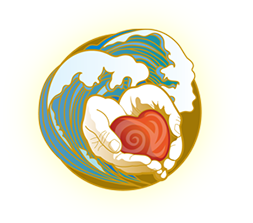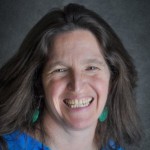Life is constantly engaging with us, speaking to us in a thousand ways.
Our job is to listen and respond.
As I spoke about in the last newsletter, from a Biodynamic perspective, we are always in relationship with something larger. We can lose contact with the larger ecosystem, but we are still a part of it. We can disengage from one another – or from ourselves – but not completely.
In our approach to Biodynamics at the School of Inner Health, we teach practitioner skills[1] that guide us in maintaining a relationship with ourselves and our clients and help us to dialogue with what the client’s body is showing us.
The first practitioner skill is about our relationship with ourselves. One reason we learn about ourselves is because, as practitioners, we need know where we are in time and space. We need to be oriented so we can help our clients orient to the present and to their bodies. We learn to be present so they can learn to be present too.
When we are present, our attention is here — not in yesterday, last year or tomorrow. When we are present, we are available to what can unfold in the moment. I love that the word “present” also means gift. One way to think of being present is as being open to life’s gifts.
This is not at all to say that every moment or experience feels like a gift. It doesn’t. But how we respond to what life presents is thoroughly dependent on how well we can recognize the present moment for what it is. When we can respond to what is actually happening, we are in the present. Often though, especially when we are challenged, we are also responding to previous experiences that feel unresolved. Becoming present is a process of differentiating from the past so that we can bring all our skills and our whole selves to the moment. We can be in our full capacity. Not all the time, but we can build our capacity to be fully present more and more.
We practice coming into deeper and fuller relationship with ourselves and being present in every module of the Craniosacral Certification training, and truly in every Craniosacral or Biodynamic session that we give as a practitioner. In this work, practice doesn’t make perfect: practice makes real – real relationships, real engagement, and really knowing and moving from a sense of purpose to affect the world in ways that are in alignment with who we are.
Some students have said that if you took our trainings for personal growth alone without planning to become a Craniosacral Therapist or Biodynamic practitioner, they would be invaluable. And, if you choose to train with us at the School of Inner Health, you will also become a more effective, knowledgeable and dynamic practitioner.
If you would like to stay connected with the School of Inner Health and be notified of upcoming classes, please sign up for our newsletter http://eepurl.com/cVplAT.
————————————-
[1] These practitioner skills were first articulated by one John and Anna Chitty, owners of the Colorado School of Energy Studies in Boulder. John and Anna have been my mentors and friends for over 15 years and have given us permission to use their materials in our classes.

